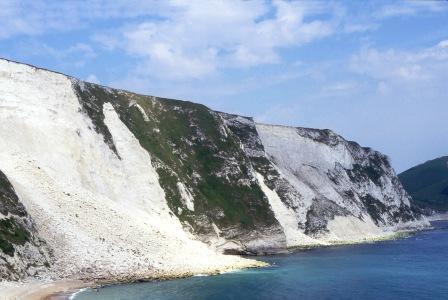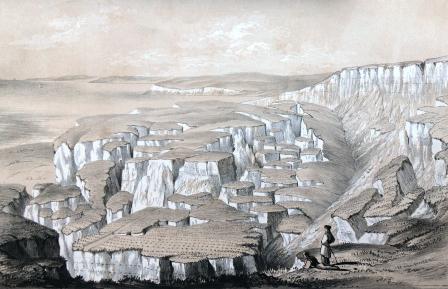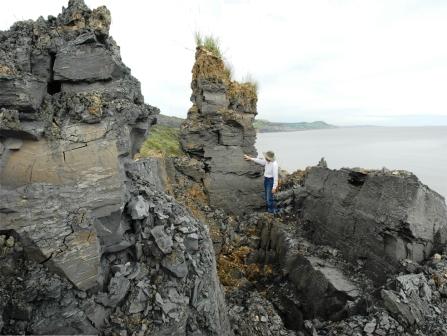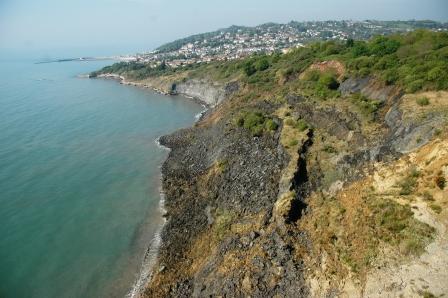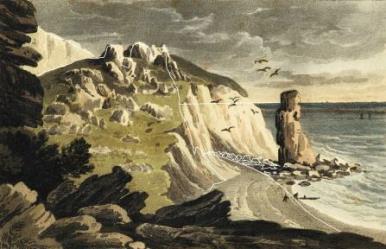The largest active landslides on the south coast of England are underlain by failure surfaces in montmorillonite-rich mudstones in the Gault Formation (mid Cretaceous). They were probably initiated in periglacial climates in the late Pleistocene when the region was subjected to successive periods of freezing and thawing of a deep permafrost layer. Southern Britain has experienced a variable temperate climate for the past 10,000 years, but the reactivation of many of the 'fossil' landslides appears to have begun within historical times.

click on images for additional information
o
Rock falls in Chalk (Cretaceous) limestones during the winter of 2000-2001, the wettest on record; Worbarrow Bay, Dorset.
Shallow-seated landslide in Lias (Jurassic) mudstones, Lyme Regis, Dorset, 1960.
Reproduced courtesy West Dorset District Council (WDDC)
copyright WDDC
View west towards Seaton, Devon across the Bindon Landslide of Christmas Day 1839, painted by Mary Buckland a few days after the event
The 1790 Hooken Landslide near Beer, Devon viewed from the west in 1819, with the present-day coastline overlaid in white.
View west towards Lyme Regis across the Spittles landslide of May 2008, photographed the day after the event. Reproduced courtesy of the Marine and Coastguard Agency (MCA), copyright MCA.
Temporary ridge of calcareous mudstone formed in the May 2008 Spittles Landslide, Dorset.
View north west of a landslide at Salcombe Regis Devon in January 2006, photographed a few days after the event. Reproduced courtesy of the Marine and Coastguard Agency (MCA), copyright MCA.
Eroded ‘diamict’ debris flow, Hook Ebb beach, Dunscombe, Devon.
C RWG
O
C RWG
O
C RWG
O
C RWG
O
References
Gallois, R. W. 2001. Field excursion to examine the geology and landforms of the Charmouth-Lyme Regis area.
Geoscience in south-west England, Vol. 10, 243-246.
Gallois, R. W. and Davis, G. M. 2001. Saving Lyme Regis from the sea: the results of recent geological site investigations.
Geoscience in south-west England , Vol. 10, 183-189.
Gallois, R. W. 2007. A recent landslide on the east Devon coast, UK.
Quaternary Journal of Engineering Geology and Hydrogeology, Vol. 40, 29-34.
Gallois, R.W. 2008. Geological controls on the failure mechanisms within the Black Ven-Spittles landslip complex, Lyme Regis, Dorset. Geoscience in south-west England, Vol. 12, 9-14.
Gallois, R. W. 2009. A recent large landslide at The Spittles, Lyme Regis, Dorset and its implications for the stability of the adjacent urban area. Geoscience in south-west England, Vol. 12, 101-109.
Gallois, R. W. 2010. The failure mechanism of the 1839 Bindon Landslide, Devon: almost right first time.
Geoscience in south-west England, Vol. 12, 000-000.
Gallois, R.W. 2011. A fossil landslide preserved offshore at Lyme Regis, Dorset, UK.
Geoscience in South-West England, 12, 329-334.
